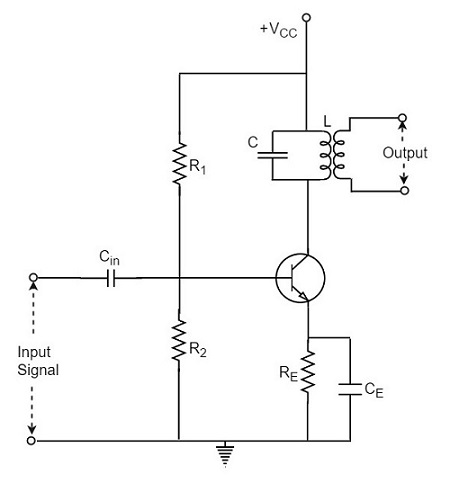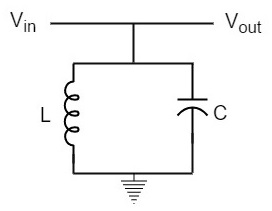Tuned Amplifiers
There are different types of amplifiers which are good at audio frequencies but inefficient at radio frequencies. Additionally, throughout a broad frequency range, the strength of such amplifiers is just the same that it does not change in accordance with the signal's frequency. This prevents choosing a certain preferred frequency while denying the other frequencies and enables the signal to be amplified uniformly throughout a range of frequencies.
Consequently, a circuit that can both select and amplify becomes necessary. For such cases, a tuned amplifier is created by combining an amplifier circuit with a choice, like a tuned circuit.
What exactly does a Tuned Amplifier mean?
Tuned amplifiers are the amplifiers that are employed for tuning; here, tuning means selection. Whenever one frequency needs to be picked out of a range of potential frequencies and all other frequencies need to be rejected, a process called selection is utilized. This decision is made using a circuit called a tuned circuit.
A tuned amplifier circuit is one that serves as an amplifier and uses a tuned circuit to replace the load.
Below is a diagram of the basic tuned amplifier circuit.

The tuner circuit consists of an LC circuit, often known as a tank or resonant circuit. It makes the frequency choice. A signal can be amplified by a tuned circuit throughout a constrained range of frequencies which is centered at the resonant frequency.
A frequency is said to be resonant whenever the reactance of the inductor in a tuned circuit equals the frequency response of the capacitor at that frequency. The symbol for it is fr.
The formula for resonance is:
2πFL=1/2πFC
fr=1/2π(LC)½
Working of Tuned Amplifier
The amplifier receives the signal that has to be amplified as input. The resonant frequency may be made to resemble the transmitted signal frequency by adjusting the capacitance values. This connection enables high impedance values to be provided to the signal frequency, thereby demonstrating the potential for maximum output. The tuned circuit only allows for maximum impedance just at tuned frequency level; it rejects all other frequencies. Therefore, the primary function of this device is to choose a signal and allow it to be amplified.
Types of Tuned Amplifiers
According to the sort of connection it has to the main circuit, a tuned circuit can either be a parallel resonant circuit or a series resonant circuit.
Series Tuned Circuit
The diagram illustrates a series tuned circuit made up of an inductor and capacitor.

Low impedance in a series resonant circuit at resonance allows for high current flow. An increasing amount of high impedance is provided by a series resonant circuit to frequencies that are distant from the resonant frequency.
Parallel Tuned Circuit
A parallel tuned circuit is created by an inductor and capacitor linked in parallel, as shown in the accompanying diagram.

A parallel resonant circuit has a high impedance at resonance, which prevents excessive current flow. The impedance of a parallel resonant circuit decreases steadily away from the resonant frequency.
Single Tuned Amplifiers
Each stage of the load in a multi-stage amplifier circuit has a parallel tuning circuit, which is referred to as a single tuned amplifier. This single tuned amplifier may be created using a basic BJT with a common-emitter design and a tuner circuit supplied at load.
The single tuned voltage amplification circuit is used in wireless signal communication to pick the required frequency range and amplify it in accordance with the needs. However, these amplifiers have a problem or flaw termed "Potential Instability." Double-tuned amplifiers are created to address the issues.
Double Tuned Amplifiers
Double tuned amplifiers are tuned amplifier circuits that incorporate transformer coupling at specific stages. The transformer's primary and secondary windings are used to tune the main and secondary windings separately utilising capacitors. However, the resonant frequency stays the same during all stages. This sort of amplifier produces a broader 3dB bandwidth than a single tuned amplifier.
Stagger Tuned Amplifiers
Cascading is used on single tuned amplifiers to reduce the system complexity of double tuned amplifiers. The stagger tuned amplifier is the name given to this cascaded variant. Two single tuned amplifiers are used at certain bandwidths. Both must have the same resonating frequencies; thus, it must be adjusted accordingly. In this kind of amplifier, the combined frequency responses of the two single tuned amplifiers result in a broad, flat bandwidth.
Advantages of Tuned Amplifiers
The benefits of tuned amplifiers include the following:
- Reactive parts like L and C are used in tuned amplifiers to reduce power loss and increase efficiency.
- By offering larger impedance at resonant frequency, the selection and amplification of desired frequency is increased.
- Due to its low resistance in a parallel tuned circuit, a lower collector supply VCC would sufficient.
Note: It's crucial to keep in mind that these benefits do not apply when the resistive collector load is significant.
- These amplifiers are utilized for wireless lengthy communications because of their large gains.
- These serve as radio frequency amplifiers at the reception stage. These amplifiers are preferred even by radio frequency communication equipment.
- It has a high degree of selectivity.
- SNR is excellent at the output level.
Applications of Tuned Amplifiers
The following are some uses of tuned amplifier.
- These amplifiers are utilized in devices like radios and dishes to choose a certain frequency range.
- The intended signal is amplified to a high degree using these amplifiers.
- When it comes to wireless communication systems, these amplifiers are preferred.
- Radio and television broadcasts are highly useful for choosing a certain frequency range.